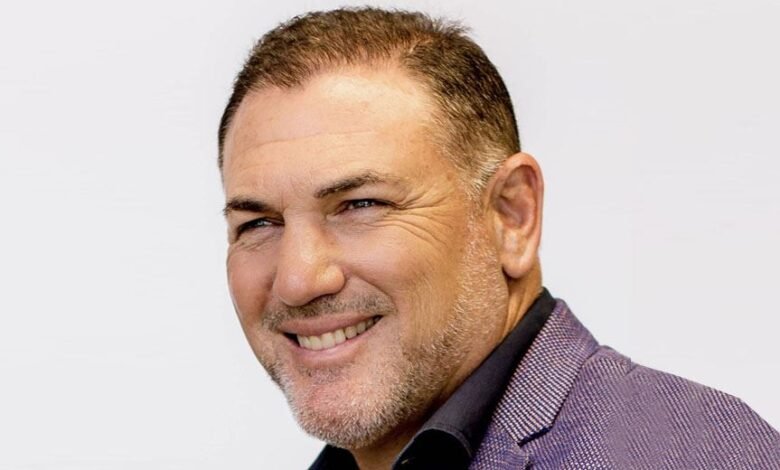Property fund PM sees possible start of new bull run

Declining interest rates and the resultant earnings growth for property companies could spark another Reits sector bull run, according to Visio Fund Management head of property Mike Flax.
‘If [interest rates] come off, I believe the finance costs for most [property] companies will probably peak over the next six months. Then a decline in interest rates will support earnings growth,’ he added during a Boutique Collective Investments (BCI) webinar.
‘As share prices rise, yields will drop, and this will cause panic among investors, who will search for yield. [Investors] will increase their exposure to real estate. That could be the start of another bull run in the Reits market,’ he added.
‘This has had a positive impact on property generally, as residential rentals rise, and that will drag up the other sectors,’ Flax said.
He said the South African national election results would also impact local yields.
He said AI-generated opportunities existed for property investors in data centres.
‘There is also a red-hot residential rental sector around the world. High-interest rates have caused this. People can’t afford to buy, and it’s put unbelievable pressure on residential rentals everywhere. In just about every single market, there has been double-digit growth in residential rentals, making it expensive for youngsters to live in the big cities,’ he added.
Sesfikile Capital portfolio manager Kundayi Munzara said AI is taking over basic call centre functions.
‘Ultimately, what’s happening is that some of those employees will be replaced, with estimates that 40-50% of space in that sector – business processing outsourcing –could be replaced by computers over the next three or four years,’ he added.
Munzara said investors had expected a drastic slowdown in global economic activity.
‘Generally, people were expecting a recession, which would have been reasonable given how quickly interest rates rose in 2022 and 2023,’ he added.
‘However, what happened is that generally, the consumer, particularly in Europe, the US and some of the larger economies, turned out to be much stronger than anticipated. Unemployment remained low. Demand, which was generally expected to fall, turned out better than expected,’ he said.
‘An important turning point for property, in general, was the fourth quarter of last year when many [investors] were pleasantly surprised with how dovish the US Fed was. Not only did it stop hiking rates, but it also said it would start cutting rates this year,’ Munzara said.
He said the Fed’s stance was a significant turning point for property worldwide.
In South Africa, consumer inflation returned to the 3-6% South African Reserve Bank inflation target rand, which made investors comfortable that there was a case for interest rates to start falling over the next 12 months. That has added to the sentiment around the listed property sector, Munzara (pictured below) said.

He added that property fundamentals locally and globally started to improve about 12 months ago. Vacancies decreased, and rental growth accelerated.
Reitway CEO Greg Rawlins said it appeared that many global property sectors had reached a bottom, even in beaten-down sectors like office malls and lodging.
‘A bottom has been reached in literally every sector. Now it’s to be seen which sector will recover and rebound the quickest and which geographies will lead to that.
‘Because there are so many sectors and so much innovation, the US will most likely recover the quickest,’ Rawlins (pictured below) said.
‘There’s still some clouds over Europe and the UK, but Australia and possibly Japan and Singapore are showing some potential to recover,’ he added.

Munzara said there was a wide variance between the best and worst property operators.
‘It’s not a situation where you could close your eyes and buy any property company. There is value, but you must be much more careful when picking the right management team,’ he added.
Munzara said the listed property sector had run in in the last six months.
‘We’re sitting with a sector trading at about a 35% discount to net asset value (NAV). A 35% discount to NAV is probably too wide a gap for a sector with supportive macro and improving fundamentals,’ he added.
Rawlins said global property valuations had a long way to go before returning to normal.
‘Global property has moved sideways for the past two-and-a-half years,’ he added.
Reitway is overweight global logistics, infrastructure, healthcare and retail property.
Flax said office property could begin to rebound after being knocked down during Covid-19.
‘We’re already seeing occupancy at higher levels than expected. Around the world, about 60-70% of staff are physically at the office on any given day,’ he added.
Investors had believed Covid-19 would result in a 50% reduction in corporate office space rentals but, Flax said, the cutback had only been about 20%.
Inflexion point?
‘In many cases, corporates are retaining exactly what they had before because the cost of chopping up and redesigning doesn’t make sense. The only kind of offices built in the last year or so have been specifically tenant-driven,’ he added.
Flax said decent GDP growth worldwide could cause an inflexion point in office property.
‘An inflexion point in many markets is when we’re in vacancies and fall to about 6-7%,’ Flax said.
‘Suddenly, you have a shortage of office space, and you get fantastic rental growth when that inflexion point is reached. When that happens, you get these 10, 20, or 30% jumps in office rentals, which might well be in the next few years,’ he added.
Munzara said there was a case for property to possibly outperform equities.
‘In aggregate, property has not performed well over the last four or five years relative to equity. Property tends to outperform general equities when rates rise,’ he said.
‘As soon as there is a pause in the hiking cycle and potential cuts, property tends to outperform general equities. The history and fundamentals are supportive. There’s a serious case for listed property to come back. You can’t hate it forever,’ Munzara said.
Source link




